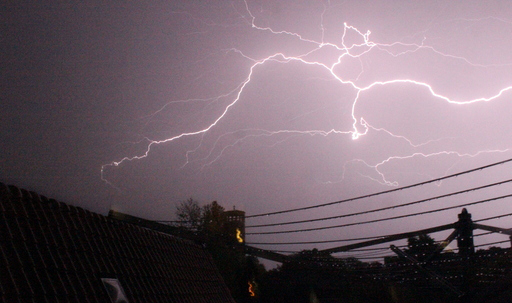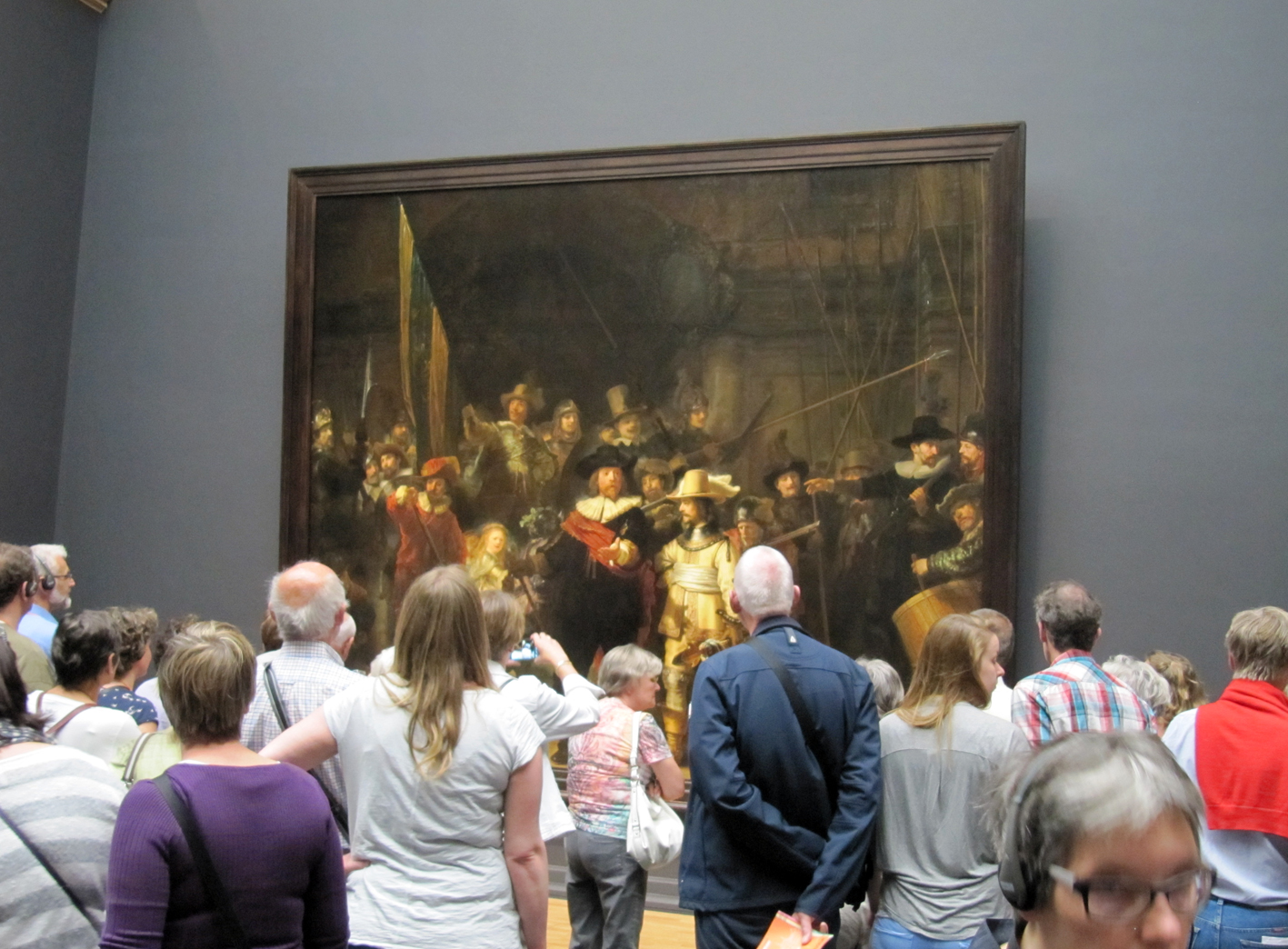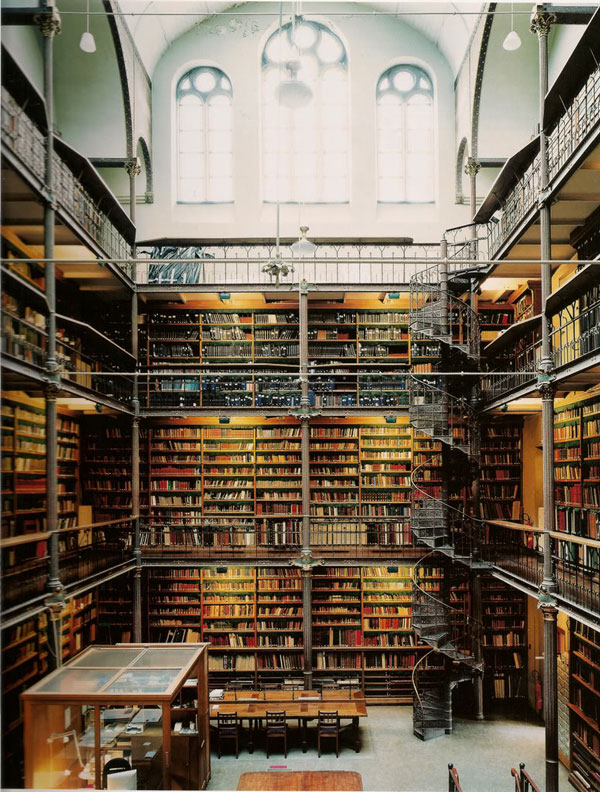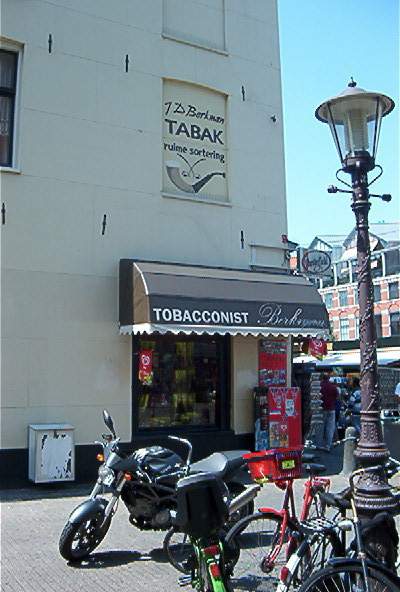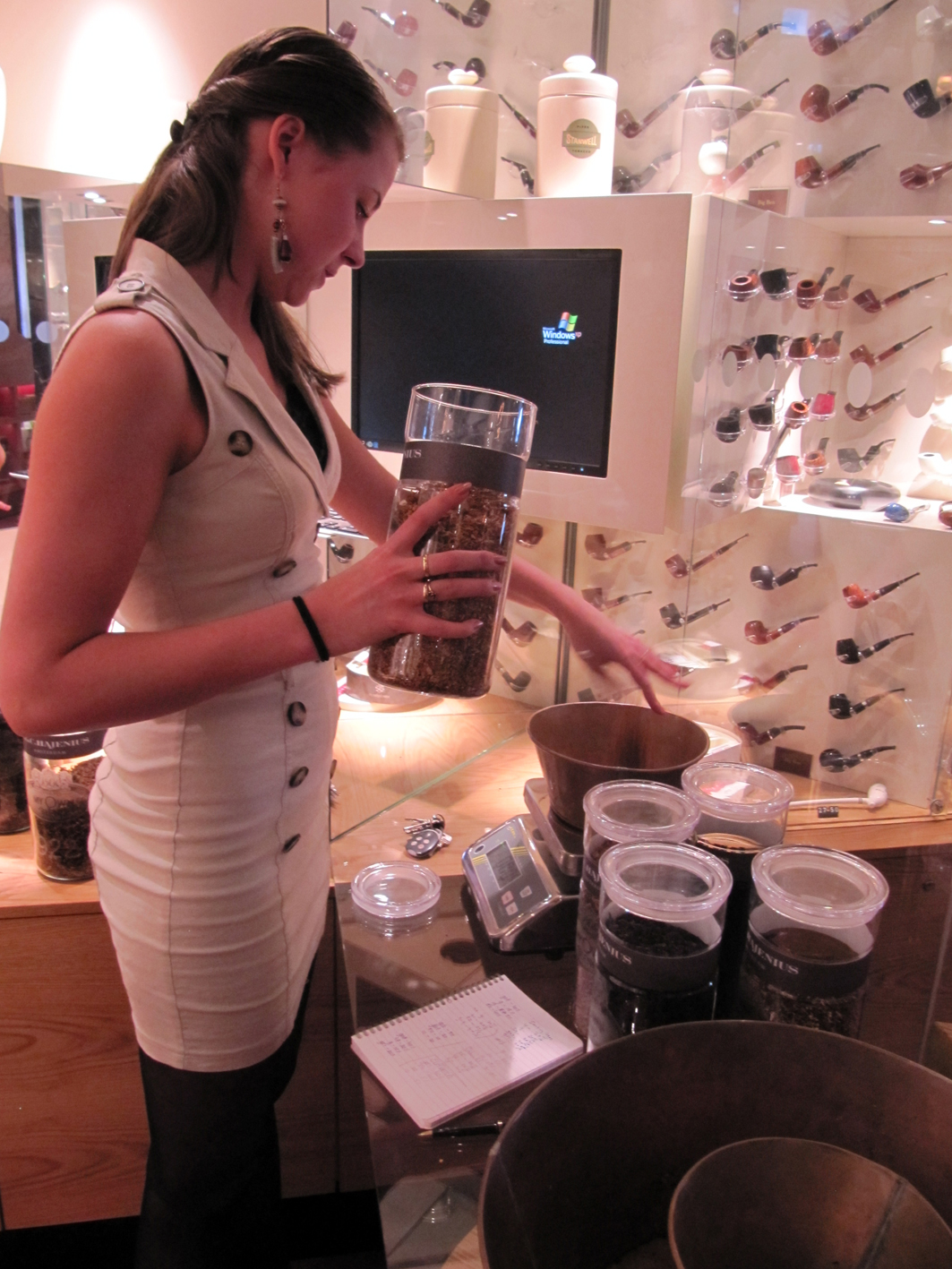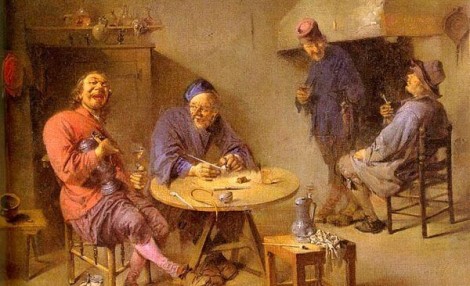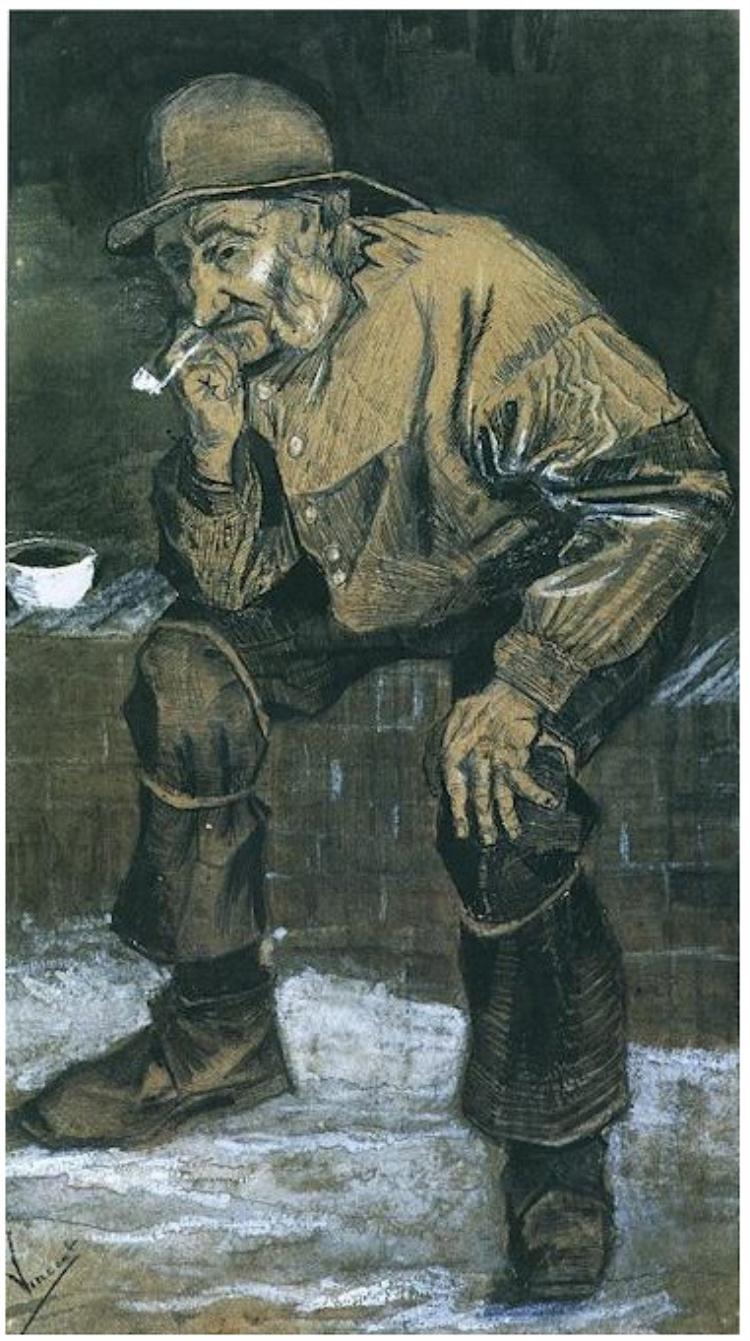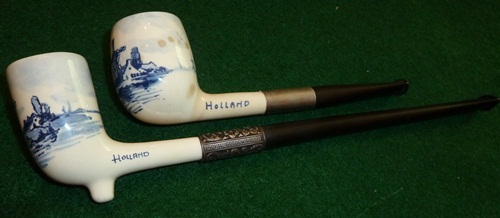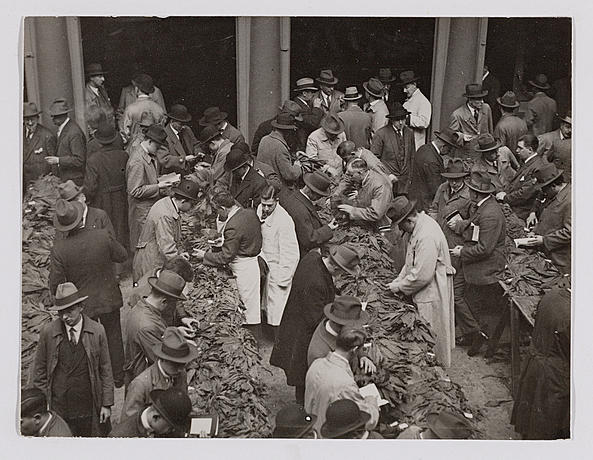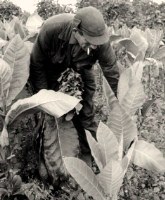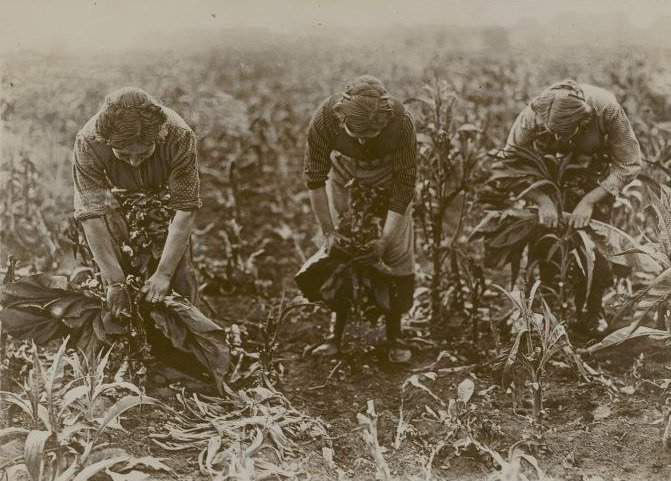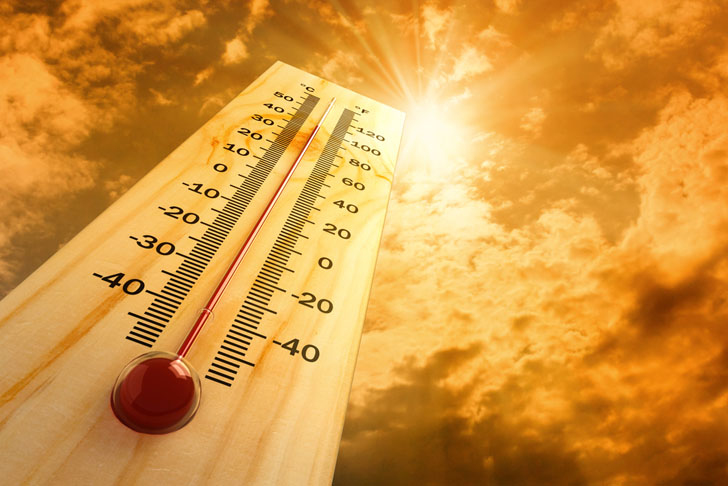 *Pffff* Hotdamn, last few weeks the weather here has been HOT and last week we even had a heatwave. During daytime 27°C – 34°C and in the nights around 15°C with a relative atmospheric humidity between 75% and 85%. Normally after work I go downstairs (I work from home 3 days a week), relax a bit, cook, eat and then I crawl behind my laptop with a nice pipe to do research and work on the blog. Nowadays I sit sweating behind my iMac in my underpants with the fan whirling at full-blast trying to do my job. Afterwards I cook as easy as possible (one-pan dishes, bread, cold meat/fish-salades), watch a little bit of TV (the living room is the coldest inside area of the house) and sit outside with a pipe. Exhausted.. Some people have all the energy with this heat but because of my ehmm.. pretty full posture I am just glad I can do the things I have to do. Nothing more..
*Pffff* Hotdamn, last few weeks the weather here has been HOT and last week we even had a heatwave. During daytime 27°C – 34°C and in the nights around 15°C with a relative atmospheric humidity between 75% and 85%. Normally after work I go downstairs (I work from home 3 days a week), relax a bit, cook, eat and then I crawl behind my laptop with a nice pipe to do research and work on the blog. Nowadays I sit sweating behind my iMac in my underpants with the fan whirling at full-blast trying to do my job. Afterwards I cook as easy as possible (one-pan dishes, bread, cold meat/fish-salades), watch a little bit of TV (the living room is the coldest inside area of the house) and sit outside with a pipe. Exhausted.. Some people have all the energy with this heat but because of my ehmm.. pretty full posture I am just glad I can do the things I have to do. Nothing more..
 We Dutch often refer to the Netherlands as our “chilly frog-land” (koud kikkerlandje). This Dutch expression reflects the way we see our own country most of the time: cold and damp. Ok, Holland is certainly not tropical but neither is it frozen. Meteorologically speaking, the country is located in a temperate weather region with moderate temperatures. Our capital, Amsterdam, is on roughly the same line of longitude as let’s say Calgary in Canada, Warsaw in Poland and the city of Irkutsk in Eastern Siberia. But unlike them, we enjoy the warm benefits of the Gulf Stream (the global air current which draws tropical air from the Caribbean area up to the north-west of Europe). This means Amsterdam has warmer average temperatures than its sister-cities I just named. Whohoo!! Unfortunately this airflow is occasionally (but often rudely..) interrupted by colder continental air from eastern central Europe.
We Dutch often refer to the Netherlands as our “chilly frog-land” (koud kikkerlandje). This Dutch expression reflects the way we see our own country most of the time: cold and damp. Ok, Holland is certainly not tropical but neither is it frozen. Meteorologically speaking, the country is located in a temperate weather region with moderate temperatures. Our capital, Amsterdam, is on roughly the same line of longitude as let’s say Calgary in Canada, Warsaw in Poland and the city of Irkutsk in Eastern Siberia. But unlike them, we enjoy the warm benefits of the Gulf Stream (the global air current which draws tropical air from the Caribbean area up to the north-west of Europe). This means Amsterdam has warmer average temperatures than its sister-cities I just named. Whohoo!! Unfortunately this airflow is occasionally (but often rudely..) interrupted by colder continental air from eastern central Europe.
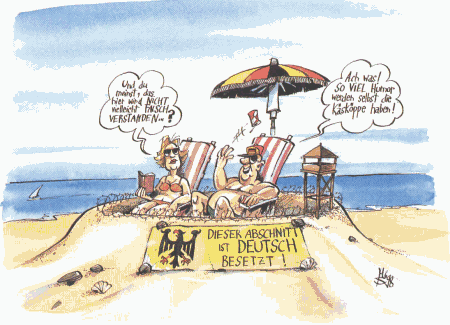 With the North Sea on our western and northern coasts, marine conditions play a major role. So weather at the coast is often quite different than the weather in inland areas. Coastal areas are generally more temperate: wetter and cooler in the summer and wet but warmer in the winter. The inland areas, especially to the south, often experience the highest national temperatures in the summer and the coldest in winter. Despite the higher average inland temperatures, there are more hours of sun per year at the coast. German tourists have known this for years and traditionally head for our beaches during summers to dig pits in the sand..
With the North Sea on our western and northern coasts, marine conditions play a major role. So weather at the coast is often quite different than the weather in inland areas. Coastal areas are generally more temperate: wetter and cooler in the summer and wet but warmer in the winter. The inland areas, especially to the south, often experience the highest national temperatures in the summer and the coldest in winter. Despite the higher average inland temperatures, there are more hours of sun per year at the coast. German tourists have known this for years and traditionally head for our beaches during summers to dig pits in the sand..
 There are few extreme weather conditions in Holland. Ok, once every 3 year we have a heatwave, like now.. But within these limits the overall weather can only be described as changeable. “Niets zo veranderlijk als het weer” (Nothing is as changeable as the weather) is a much used expression. This means that it occasionally gets rather cool in summer and rather warm in winter. The winters can vary from mild to very cold indeed but temperatures below -10°C are rare. Of course the harsh winds can make it feel a lot icier.. The sheer flatness of mountain-less Holland (our highest “mountain”, the Vaalserberg is 322,7 metres..) means that weather and temperatures can change quickly without warning as weather rushes unhindered across the country. Our successful use of the famous windmills exploited this phenomenon. Cold fronts from inland eastern Europe can abruptly drive sun-lovers (and Germans) from the beach in the middle of summer while sudden cold waves can occur in the middle of an otherwise mild winter. But we don’t mind that last thing because it often means we can enjoy our national sport once again: ice-skating.
There are few extreme weather conditions in Holland. Ok, once every 3 year we have a heatwave, like now.. But within these limits the overall weather can only be described as changeable. “Niets zo veranderlijk als het weer” (Nothing is as changeable as the weather) is a much used expression. This means that it occasionally gets rather cool in summer and rather warm in winter. The winters can vary from mild to very cold indeed but temperatures below -10°C are rare. Of course the harsh winds can make it feel a lot icier.. The sheer flatness of mountain-less Holland (our highest “mountain”, the Vaalserberg is 322,7 metres..) means that weather and temperatures can change quickly without warning as weather rushes unhindered across the country. Our successful use of the famous windmills exploited this phenomenon. Cold fronts from inland eastern Europe can abruptly drive sun-lovers (and Germans) from the beach in the middle of summer while sudden cold waves can occur in the middle of an otherwise mild winter. But we don’t mind that last thing because it often means we can enjoy our national sport once again: ice-skating.
Like now in the summer, Holland has more than its fair share of hot, clammy days. Cycles that begin with a day or two of sun, gradually overwhelmed by increasing humidity as atmospheric pressure increases. The cycle ends in a predictable, often spectacular thunderstorm (just had one), which clears the air until the next cycle comes along a day or two later. So at the beginning of such a cycle you best keep the house dark and doors and windows closed to keep the heat outside. Just when the inevitable thunderstorm has passed you can throw everything open to let the cooler air cool off the heated house.
It seems that with the change of the seasons my taste for certain tobaccos also changes. In wintertime I smoke all kinds of full latakia mixtures and in autumn and spring sometimes a Virginia or a VaPer gets added in the rotation. But with these hot days I hardly smoke blends with the dark leaf. It is just too.. Demanding, too heavy, too dark for my palate.. Two exceptions, after a thunderstorm you can smell the wet earth in the air and when I then sit outside I like a good spicy balkan blend. Also mr. Pease made a blend called Robusto which was inspired by the famous Balkan Sobranie Virginia no. 10: Virginias, orientals, a bit of latakia and a bit of cigar-leaf. Especially that last ingredient goes well with the heat. Cigar-leaf was made in and for hot weather.
But in general summertime for me is the time for all kinds of Virginia tobaccos, VaPers, aromatics and Semois. The Virginia tobaccos I smoke must preferably be light, so I regularly go for Orlik Golden Sliced, the similar Jurewicz Neumarkt Special 2002 and Capstan. The king of VaPers, Escudo, is too heavy for me in summer. But it’s cousin Peter Stokkebye Luxury Bullseye Flake with the cavendish core just fits the bill for me. The few aromatics I now smoke are DTM Sweet Vanilla Honeydew and Planta Black Vanilla. The Belgium Semois leaf seems almost made to smoke in warm weather. Maybe because of the light cigar-like taste. When I put some in one of my corncobs it is pure bliss. Not too demanding for the palate but interesting enough to keep the attention.
Anyway, I am going to enjoy a glass of cold Belgium beer and a pipe filled with Robusto. Latakia fumes have the handy characteristic that they keeps those damn mosquitoes away. It is not often that Ellen sits close to me when I smoke a mixture with the dark leaf. But she hates the blood sucking insects more than the smell coming from my pipe hehehe..

